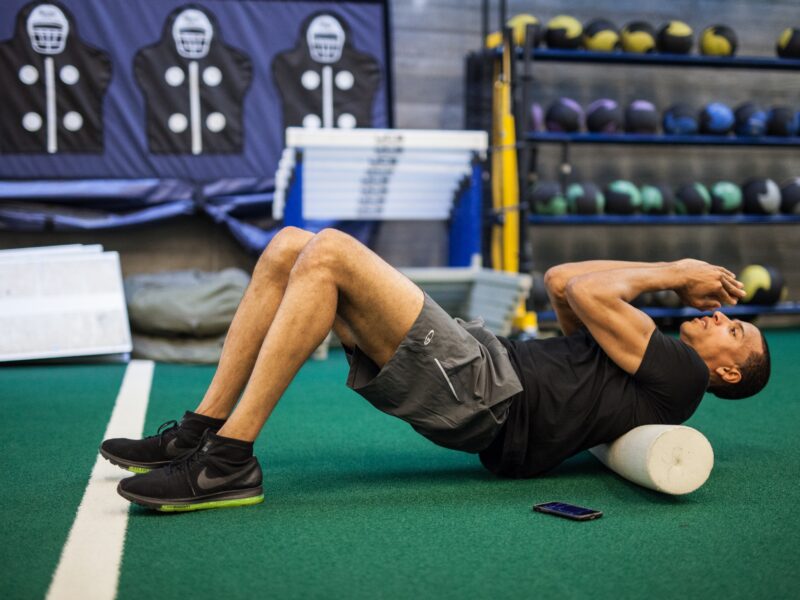Foam rolling, also known as self-myofascial release (SMR), is a self-massage technique used to relieve muscle tightness, reduce muscle soreness, and improve flexibility. It involves using a cylindrical piece of foam, typically referred to as a foam roller, to apply pressure to specific areas of the body.
Foam rolling is widely used in fitness, sports, and physical therapy for its potential benefits in promoting muscle recovery and mobility.
Principles of Foam Rolling
- Myofascial Release: Foam rolling targets the myofascial system, which consists of muscles (myo) and the connective tissue (fascia) that surrounds and supports them. By applying pressure to specific areas, you can release muscle knots, trigger points, and fascial adhesions.
- Self-Massage: Foam rolling is a self-massage technique, meaning individuals can perform it on their own without the need for a professional massage therapist.
- Pressure and Movement: During foam rolling, the individual’s body weight is used to apply pressure to the foam roller. The roller is moved back and forth along the muscle, targeting tight or sore areas. The individual can control the pressure by adjusting body position and weight distribution.

Benefits of Foam Rolling
- Muscle Recovery: Foam rolling can help reduce muscle soreness and stiffness, especially after intense exercise or physical activity.
- Improved Flexibility and Range of Motion: Regular foam rolling can enhance muscle and joint flexibility, which can lead to a better range of motion during exercise and daily activities.
- Injury Prevention: By addressing muscle imbalances, tightness, and trigger points, foam rolling may help prevent injuries related to overuse or poor movement patterns.
- Increased Blood Flow: Foam rolling promotes increased blood flow to the targeted muscles, which can aid in the healing and recovery process.
- Stress Reduction: The practice of foam rolling can have a relaxing effect, helping to reduce stress and tension.
- Enhanced Athletic Performance: Improved muscle flexibility and range of motion can lead to better athletic performance.
How to Use a Foam Roller
Here’s a basic guide on how to use a foam roller effectively:
- Select the Right Foam Roller: Foam rollers come in various densities, from soft to firm. Beginners may start with a softer roller and gradually progress to a firmer one as their muscles adapt. The density of the roller can influence the intensity of the massage.
- Prepare the Space: Find a flat, comfortable surface to perform your foam rolling routine. Ensure you have enough space to move and maneuver the roller.
- Target Specific Areas: Focus on specific muscle groups or areas that feel tight or sore. Common areas for foam rolling include the quadriceps, hamstrings, calves, IT band, glutes, and upper back.
- Apply Pressure: Start with the roller on the area of focus and gradually apply body weight pressure onto the roller. Use your hands and feet to support your body.
- Roll Slowly: Move the roller slowly along the muscle, allowing it to sink into any knots or trigger points. Roll back and forth for about 20-30 seconds on each area.
- Breathe and Relax: While rolling, take deep breaths and try to relax. Tension and shallow breathing can counteract the benefits of foam rolling.
- Repeat: If an area is particularly tight, you can repeat the rolling process a few times. Over time, you may feel the muscle tension decrease.
- Stretch and Mobilize: After foam rolling, perform gentle stretches to enhance the benefits of the massage and further improve flexibility.
- Stay Hydrated: Proper hydration is essential for muscle health and recovery, so remember to drink water throughout the day.
It’s important to note that foam rolling should not be excessively painful. While it can feel uncomfortable, especially when targeting tight areas, it should not cause extreme pain or discomfort.
If you’re new to foam rolling or have any underlying health concerns, consider consulting with a fitness or healthcare professional for guidance and to ensure you’re using the technique safely and effectively.










